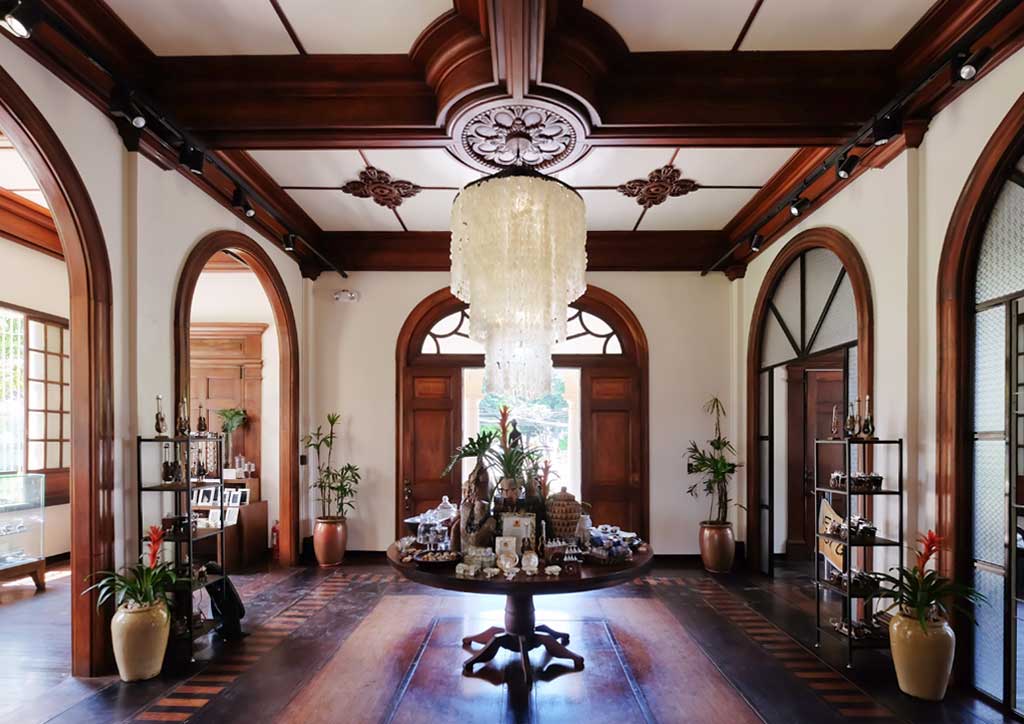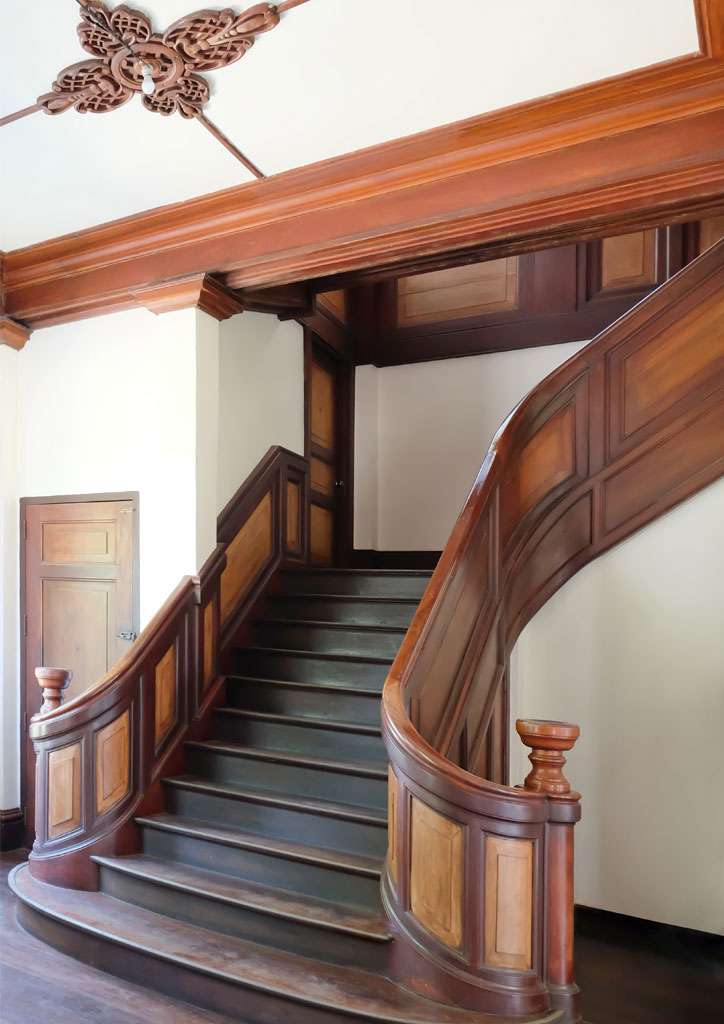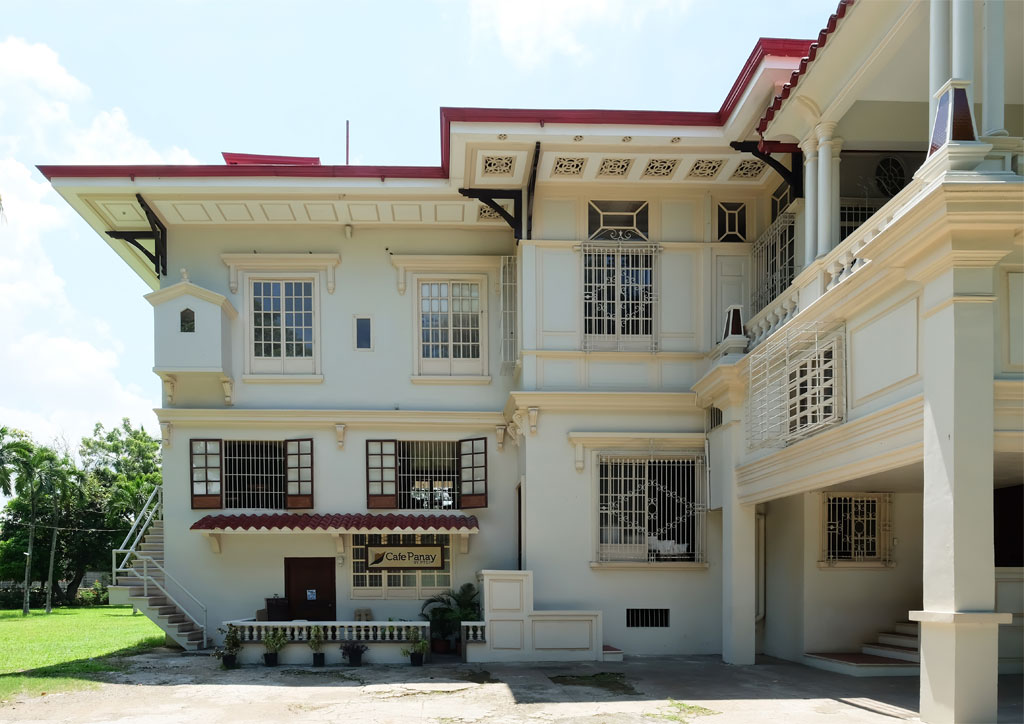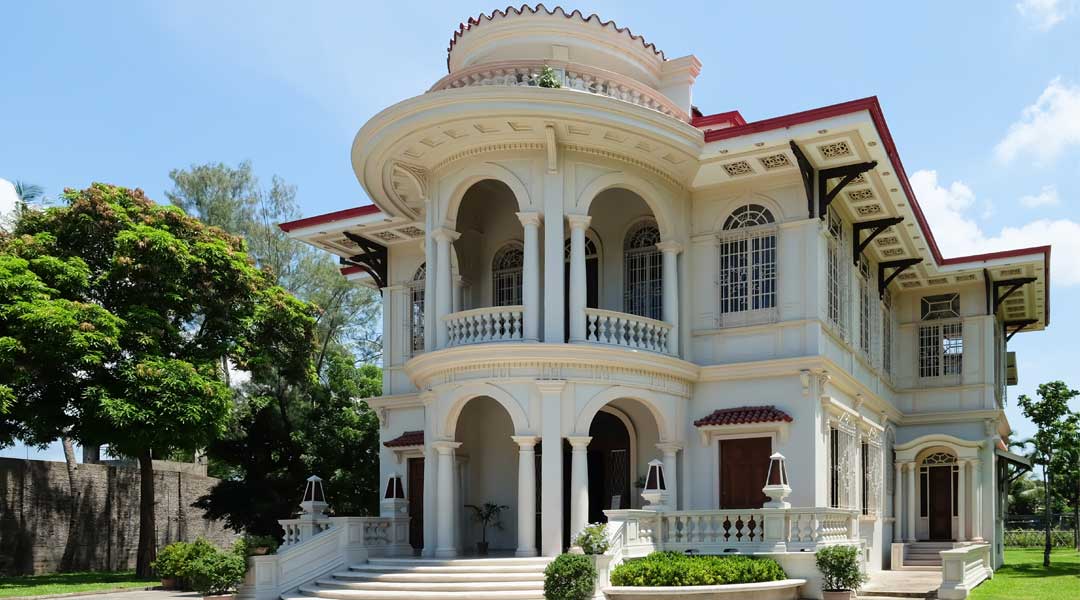Heritage conservation advocates in Iloilo were alarmed when news came out the 91-year-old Lacson-Yusay Mansion or Molo Mansion in Jaro was bought by the SM Group. Five years ago, the corporate retail giant knocked down Leandro Locsin’s Benguet Center in Mandaluyong City for a high-rise office tower. Fears were assuaged when an architectural rendering of a fully restored Molo Mansion surfaced online. It showed the grand two-storey villa at the center of an expansive lawn, standing beside an understated two-storey retail building that complements, not imitates, the mansion’s florid architecture.

Within a year, SM indeed restored the abandoned and dilapidated house to its pristine condition. Following the plan of conservation architects Augusto Villalon of the Cultural Heritage Resource Associates and Melvin Patawaran of Tropiks Design Studio, the developer rehabilitated the deteriorating walls, replaced all broken architectural details, and repainted the structure. A garden was planted outside, the interiors were refurbished, and the building retrofitted with new electrical and sanitary systems. Except for the proposed adjacent retail structure yet to be completed, the result was exactly as shown in the widely-circulated drawing.
READ MORE: Oboza Heritage House in Davao finds new life as a restaurant
Adaptive reuse
Repurposed as Kultura Filipino, a cultural souvenir and gift shop, the newly-renovated Molo Mansion opened in time to welcome the delegates of the Asia-Pacific Economic Cooperation (APEC) Summit who met for sideline meetings at different locations in Iloilo in September 2015. As part of their city tour itinerary, the delegates explored the cultural boutique including the small restaurant and art gallery at the back. When BluPrint visited the place in July 2016, the upper levels were closed “for further renovation.”
History of the house

Built in 1926, the Molo Mansion is defined by its American Colonial architecture with Neoclassical and subtle Art Deco features. From the gate, visitors are dropped off at the roundabout with a fountain at the center, and led up to the semi-circular arcaded portico with a terraced veranda on the ground floor and a balcony on the second floor.
A molded stringcourse supported by a series of ancones, a scroll-shaped corbel, runs around the second-floor line of the building envelope. The house is surmounted by a hip and valley terracotta-tiled roof with stylized floral-patterned roof vents supported by wooden brackets. Above the central semi-circular bay, there is a mirador, a common feature of Mission Revivalist architecture in the Philippines, which affords extensive views of the surrounding gardens.
The Lacson-Yusay Mansion originally belonged to the family of Estanislao Yulo Yusay, a prominent lawyaer and judge from Molo, and his wife Petra Lacson-Yusay. They had been living on the property before the mansion was built in 1925, fifteen years after Estanislao died. Of the couple’s ten children, Rosario Yusay inherited the house where she lived with her husband, Timoteo Consing Sr., governor of Iloilo from 1934 to 1937.
Presidents Manuel Quezon and Sergio Osmeña were said to have stayed in the mansion on official trips to the city. The property was handed down to the governor’s son, Timoteo “Nene” Consing Jr., spouse of Nieva Ramirez-Consing, and one of the owners of the sugar mill company Passi Sugar Central (acquired by the Universal Robina Corporation in 2007). The Consing family sold the property to SM in 2014.
Needed structural retrofit
Despite the admirable restoration of the mansion, the adaptive reuse proved a failure. Its conversion from residential to commercial use called for structural retrofitting, something the developer apparently skipped. When the mansion formally opened to host the APEC delegates, ironically meeting in Iloilo to discuss risk management, Patawaran noticed the second floor was shaking due to heavy foot traffic. He later learned the developer did not fully implement their recommendation to strengthen the building’s structure to accommodate the influx of customers.

In his article in the Inquirer, Villalon explained the structural safety standards for commercial buildings are higher than those of houses because of the increased live load weight (moving load) on the upper floors. According to Villalon, a retrofit of the Molo Mansion, built almost a century ago, required the reinforcement of its structural framework, particularly the columns and foundation, to serve its new purpose and satisfy the requirements of the National Building Code. The process would be considerably more expensive than demolishing the historic structure and constructing a new building from the ground up. Perhaps this was the reason the retrofit was skipped and the building only enjoyed a facelift and interior renovation.
READ MORE: Bacolod’s Gaston Ancestral House is glorious in reel and real life
Heritage and development
In conserving heritage properties, the developer often incurs opportunity costs by reducing the scale of development, which in turn compromises the property’s revenue-generating potential. As Villalon recommends, the government should offer assistance or incentives—something the present Cultural Heritage Law does not provide—to encourage developers to conserve the country’s historic assets without hurting their businesses.
SM deserves credit for giving a dilapidated ancestral house a new lease in life. Unfortunately, the incomplete effort has left them with a lovely building they can only use in part. That is, until they can determine a profitable use for the second floor that does not place the public and their business at risk. ![]()
Original article first appeared in BluPrint Vol 1 2017. Edits were made for BluPrint online.



